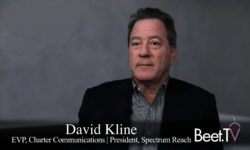Traditionally, TV has suffered from inadequate knowledge about those viewers. The industry has come to call this “probabilistic” targeting.
But its flip side, “deterministic” targeting, promises to give advertisers more accuracy, by using real viewer data to find the known audiences.
Still, at this stage in the game, too few executives understand enough about the new deterministic opportunity – according to an ad-tech exec urging more awareness.
“I hope that the marketplace at large develops a better understanding of what deterministic data is for television, and what it can do,” says Noah Levine, chief revenue officer of 605, ahead of Beet Retreat In The City @ Horizon Media, an industry discussion event in New York on Wednesday.
So, what is “deterministic” TV data, exactly?
Levine says it includes cable set-top box data, automatic content recognition and (ACR) viewership data – real data about what real viewers are watching.
“Deterministic data obviously supports the ability to see at a granular level who is exposed or what households are exposed to a particular ad, and then to be able to perform a whole slew of attribution,” Levine says.
“What is special about deterministic TV is that it supports extremely powerful data activation onto the television ecosystem, and that’s something that other types of TV viewership data can’t support.”
605 provides aggregate set-top box and automatic content recognition (ACR) from 21 million households. It combines viewing data from:
- Charter Communications’ Spectrum cable subscribers.
- Inscape, the company taking actual viewing data from Vizio TVs using automatic content recognition (ACR).
Beet Retreat In The City @ Horizon Media is presented by 605 and Spectrum Reach. For more videos from the event, please visit this page.












































